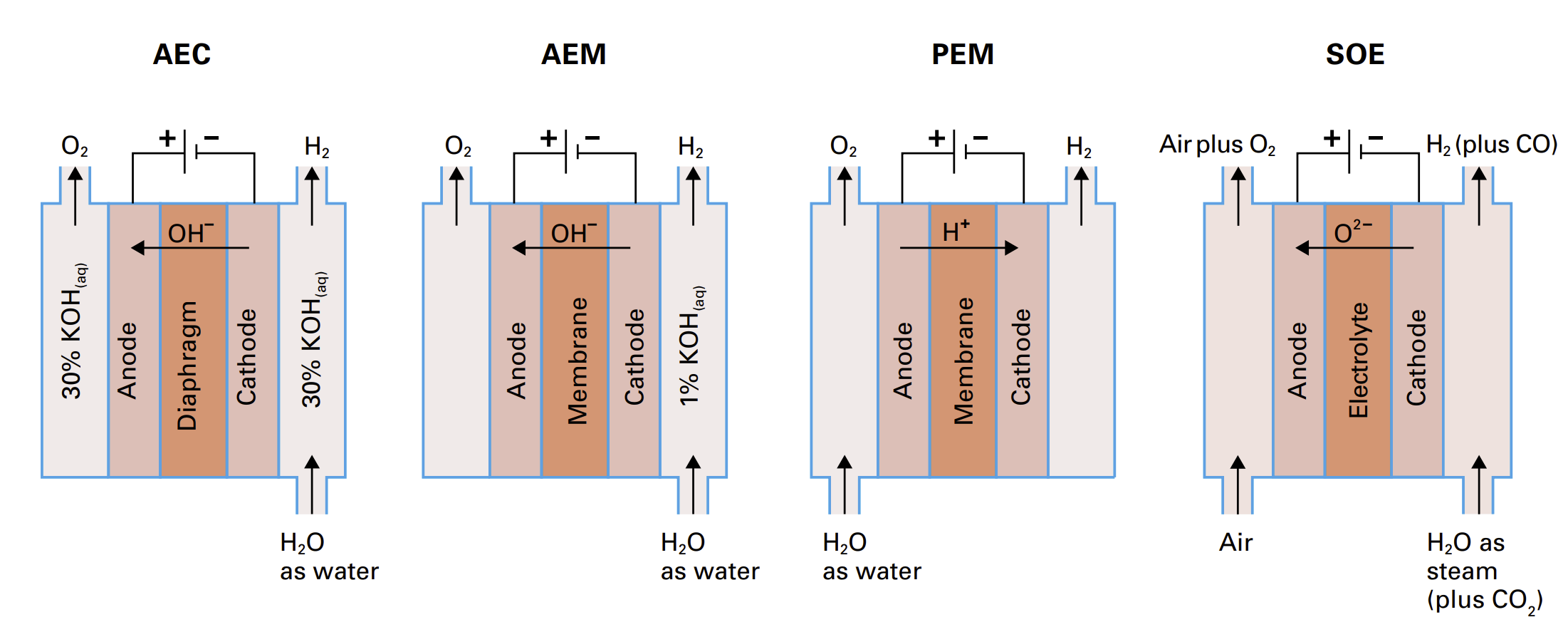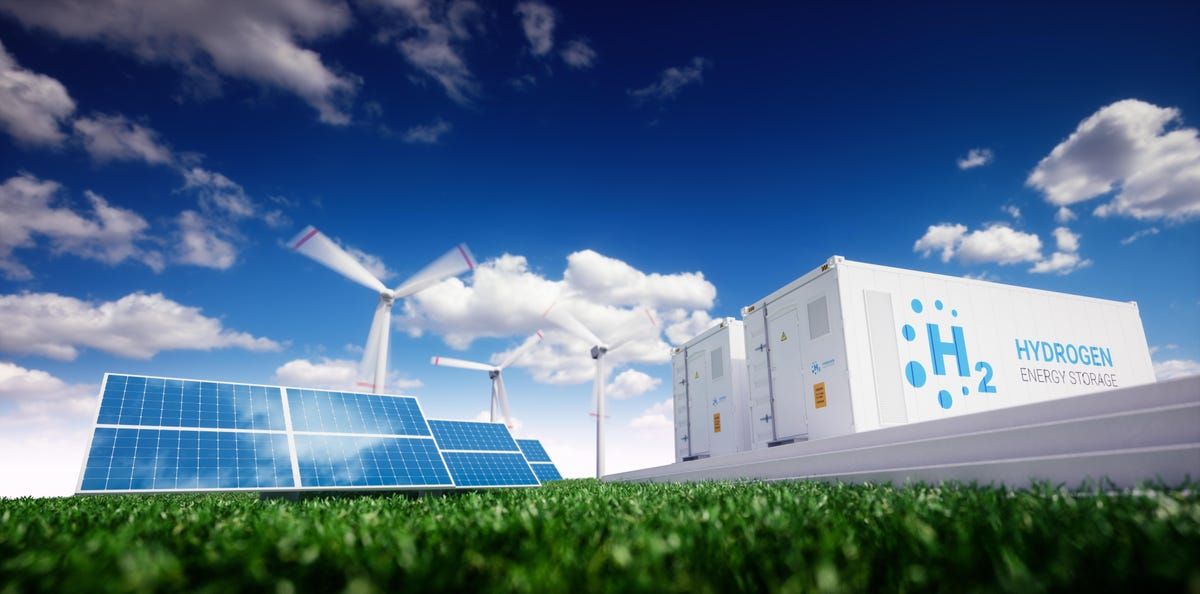At present, the proposal of China's Carbon Peak Emission & Carbon Neutrality goals will further speed up the process of carbon reduction. Hydrogen, as a zero-carbon energy carrier, is getting more and more attention: in 2050, 20% of the world's CO2 emission reduction can be accomplished through hydrogen energy substitution, and hydrogen energy consumption will account for 18% of the world's energy market.
Nowadays, the hydrogen production process mainly consists of four electrolytic water technologies: Alkaline Electrolysis (ALK), Anion exchange membrane (AEM), Proton Exchange Membrane (PEM), Solid Oxide Electrolysis Cell (SOEC). In the field of electrolysis, China presents an industrial application state with AE hydrogen production as the main and PEM hydrogen production technology as the supplement.

(1) Alkaline Electrolysis (ALK/AWE)
Alkaline liquid water electrolysis technology uses KOH and NaOH aqueous solutions as electrolytes to electrolyze water to generate hydrogen and oxygen under the action of direct current. However, the purity of the generated hydrogen is in the range of 99.7% to 99.9%, and it is necessary to use purification equipment to purify the produced hydrogen to meet the use standard.
(2) Proton Exchange Membrane (PEM)
Hydrogen ions in water pass through the proton exchange membrane and combine with electrons to form hydrogen atoms, and the hydrogen atoms combine with each other to form hydrogen molecules. This technology has a simple process and high energy efficiency. The hydrogen produced can reach a purity of 99.999%, which can be directly supplied to hydrogen fuel cell vehicles as fuel. However, the cost is high due to the use of noble metal electrocatalysts and other materials.
(3) Anion exchange membrane (AEM)
As the latest water electrolysis technology, the potential of anion exchange membrane (AEM) electrolyzers lies in combining the low cost of alkaline electrolyzers with the simplicity and high efficiency of PEM. This technology can use non-precious metal catalysts, titanium-free components, and can operate under differential pressure like PEM. However, the current AEM membrane has chemical and mechanical stability problems, which affect the life curve. In addition, the low conductivity of AEM membranes, slow catalytic kinetics, and poor electrode structure also affect the performance of AEMs.
(4) Solid oxide water electrolyzer (SOEC)
Solid oxide (SOEC) electrolyzers operate at high temperatures (700-850°C), and the kinetic advantages allow the use of inexpensive nickel electrodes. If high-quality waste heat in industrial production is used (for example, the energy input is 75% electric energy + 25% heat energy in water vapor), the system efficiency (LHVH2toAC) of SOEC is expected to reach 85% in the near future, and reach the EU's 2030 goal within 10 years 90%.
(5) Comparison of ALK and PEM
- Cost and lifetime
ALK is the most mature electrolysis water hydrogen production technology in China at present. The production cost is low. The water electrolyzer can reach 75,000 hours of working life (about 8 years), but there are lye loss, corrosion, and high energy consumption. The problem is that it is poorly adapted to fluctuations, and it needs to be equipped with energy storage when combined with wind and light.
PEM has high operating current density, low energy consumption and high hydrogen production pressure, adapts to the fluctuation characteristics of renewable energy power generation, is easy to combine with renewable energy consumption, and has great development potential in the field of green hydrogen production. However, compared with the service life of the ALK, the service life of the PEM water electrolyzer is only 60,000 hours (about 7 years).
- Purity comparison
The purity of hydrogen produced by ALK is in the range of 99.7% to 99.9%. To achieve hydrogen fuel cell vehicles, additional purification equipment is required for purification.
The purity of hydrogen produced by PEM is in the range of 99.9% to 99.999%, which can meet the standards for hydrogen fuel cell vehicles and can be directly bottled.
- Yield and load
ALK is mature and suitable for GW-level green hydrogen projects. It works for a long time, and the hydrogen production capacity of one large-scale hydrogen production equipment can reach 70,000 kilograms of hydrogen per day. However, the startup and shutdown time of ALK hydrogen production is relatively long. It takes about 60 minutes for cold startup and shutdown. In overload power usage, the ALK can only reach 110% load.
Compared with ALK, PEM is more flexible. The start-up and stop time only take about 5 minutes for cold start and stop. However, the existing technology of PEM large-scale hydrogen production can only achieve 50,000 kg of hydrogen per day. In the case of overload power usage, the PEM can reach 160% of the maximum load.
- Hydrogen production cost
In addition to the equipment, the hydrogen production cost of ALK and PEM mainly depends on the cost of electricity, which accounts for 70% of yearly cost. The main difference between ALK and PEM is that the input power of PEM can be directly connected to DC-DC for lossless hydrogen production, while the input power of ALK needs AC-DC, which has about 3% loss in energy consumption.



